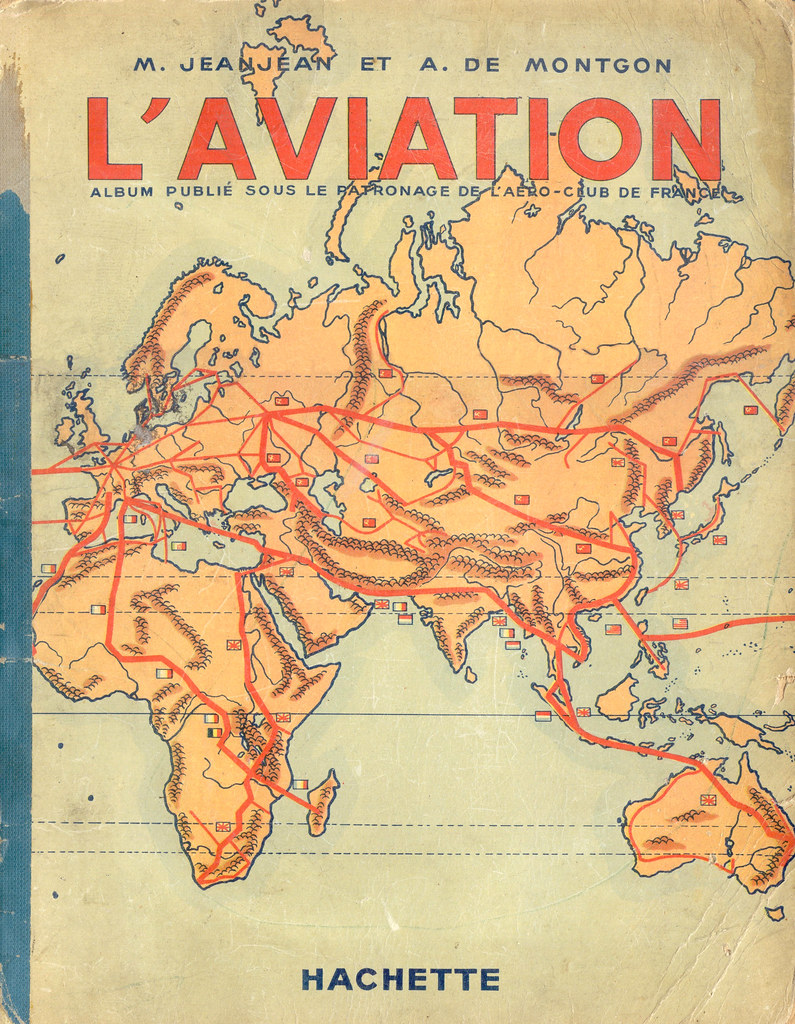Navigating Technological Advancements
The aviation industry in Europe is on the cusp of a technological revolution that will redefine the way people travel. With the advent of electric propulsion systems, artificial intelligence, and advanced materials, the landscape of aviation is undergoing a profound transformation. Electric aircraft, with their potential for reduced emissions and operational costs, are gaining traction. Initiatives like the European Union Aviation Safety Agency’s (EASA) roadmap for the certification of electric and hybrid aircraft highlight the commitment to embracing sustainable technologies. In parallel, artificial intelligence is revolutionizing air traffic management, enhancing safety, and optimizing flight routes, contributing to a more efficient and connected airspace.
As we look to the future, the rise of urban air mobility (UAM) is another frontier that promises to reshape how we navigate our cities. Companies are actively developing electric vertical takeoff and landing (eVTOL) aircraft, with prototypes being tested across Europe. This shift towards cleaner, quieter, and more agile urban transport solutions aligns with the region’s commitment to sustainable practices. The embrace of these technological advancements not only fosters innovation but also positions Europe at the forefront of the global aviation industry.
Sustainability in Flight
The aviation industry is acutely aware of its environmental impact, and Europe is taking proactive steps to address sustainability concerns. The European Union’s “Flightpath 2050” initiative aims to make air travel more sustainable by reducing emissions, improving fuel efficiency, and promoting the development of alternative fuels. Sustainable aviation fuels (SAFs) are gaining prominence as a viable alternative to traditional jet fuels, with the European Commission setting ambitious targets for their increased use in the coming years.
Moreover, the industry is exploring the potential of hydrogen as a clean energy source for aviation. Hydrogen-powered aircraft are being researched, with the promise of zero-emission flights on the horizon. Investments in research and development, coupled with supportive policies, indicate a commitment to fostering sustainable aviation practices. As Europe works towards achieving its climate goals, the aviation sector is expected to play a pivotal role in contributing to a greener and more environmentally conscious future.
Statistics: According to Eurostat, air transport in the European Union was responsible for 3.7% of total greenhouse gas emissions in 2019. This underscores the urgency for sustainable practices in the aviation industry.
Connectivity and Resilience
Connectivity remains a cornerstone of Europe’s aviation strategy, with ongoing efforts to strengthen links both within the continent and globally. The Single European Sky initiative, aimed at harmonizing air traffic management across Europe, is a pivotal step towards optimizing airspace usage and reducing delays. The implementation of modern communication, navigation, and surveillance technologies enhances the efficiency of air travel, contributing to a more connected and resilient network.
In the face of global uncertainties, the COVID-19 pandemic underscored the need for resilience in the aviation sector. Europe’s aviation industry has demonstrated adaptability, with a focus on digitalization and the integration of smart technologies to enhance operational flexibility. The promotion of interoperable systems and the adoption of digital platforms for passenger services contribute to a more resilient and responsive aviation ecosystem.
Regulatory Landscape and Collaboration
The future of aviation in Europe is intricately linked to regulatory frameworks that balance innovation with safety and sustainability. EASA’s role in shaping regulations for emerging technologies, such as drones and electric aircraft, is crucial for fostering a competitive and safe aviation environment. Striking the right balance between encouraging innovation and ensuring adherence to high safety standards will be paramount in shaping the industry’s trajectory.
Collaboration between industry stakeholders, governments, and research institutions is a linchpin for success. Public-private partnerships, research and development initiatives, and collaborative projects contribute to a dynamic ecosystem that nurtures innovation. Europe’s commitment to fostering a collaborative approach ensures that the aviation industry can overcome challenges and capitalize on opportunities, positioning itself as a global leader in the years to come.
Challenges and Opportunities Ahead
While the future of aviation in Europe holds great promise, it is not without its challenges. The industry faces the imperative to reconcile growth with environmental responsibility. Striking a balance between meeting the increasing demand for air travel and adhering to stringent environmental standards remains a delicate task. The aviation sector must continue to invest in research and development to discover innovative solutions that minimize its carbon footprint while ensuring operational efficiency.
Economic considerations also play a pivotal role. The recovery from the impacts of the COVID-19 pandemic has highlighted the need for financial resilience within the aviation industry. Sustainable business models, cost-effective technologies, and strategic investments will be crucial to ensure the industry’s ability to weather economic uncertainties and shocks.
The Role of Innovation Hubs and Startups
In fostering a culture of innovation, Europe is witnessing the emergence of aviation technology hubs and startups that are pushing the boundaries of what is possible. These innovation clusters serve as incubators for novel ideas, providing a platform for collaboration between established industry players and nimble startups. Government support and private investment in these hubs are instrumental in accelerating the development and adoption of cutting-edge technologies.
Startups, with their agility and fresh perspectives, contribute to the industry’s evolution by addressing specific challenges, from sustainable aviation fuels to electric propulsion systems. As Europe nurtures these hubs, it positions itself as a hub of innovation in the global aviation landscape.
Charting a Course for the Future
The aviation industry in Europe stands at a pivotal juncture, guided by a vision of innovation, sustainability, and connectivity. The concerted efforts to embrace emerging technologies, prioritize sustainability, and enhance connectivity underscore a commitment to shaping an aviation sector that is not only resilient but also a pioneer in global aviation.
As the industry navigates the challenges and seizes the opportunities that lie ahead, collaboration, regulatory foresight, and a dedication to sustainable practices will be paramount. Europe’s aviation future hinges on a collective determination to build an industry that not only meets the evolving needs of society but also sets a precedent for responsible and pioneering air travel worldwide. In the coming years, the skies above Europe may witness not just the passage of aircraft but a transformative journey towards a more sustainable and connected future.
Embracing Diversity and Inclusivity
A critical aspect of the future of aviation in Europe is the recognition of the need for diversity and inclusivity. As the industry evolves, fostering an inclusive environment that embraces a diverse range of talents and perspectives becomes imperative. Initiatives to encourage women and underrepresented groups to pursue careers in aviation, from engineering to leadership roles, are gaining momentum. Embracing diversity not only enhances the industry’s innovative capacity but also ensures that the benefits of aviation are accessible to a broader spectrum of society.
Balancing Innovation with Regulation
As Europe embraces cutting-edge technologies, the regulatory landscape must evolve in tandem. Striking a balance between fostering innovation and ensuring safety and security is an ongoing challenge. Regulators must adapt swiftly to the dynamic advancements in aviation technology without compromising on the rigorous standards that have defined the industry. Collaborative efforts between industry stakeholders and regulatory bodies are essential to create a framework that encourages innovation while maintaining the highest safety standards.
A Global Perspective
The future of aviation in Europe is intrinsically linked to its global standing. Collaboration on a global scale is crucial for addressing challenges that transcend borders, from climate change to airspace management. Europe’s aviation industry must actively engage with international counterparts, contributing to the development of global standards, best practices, and collaborative research efforts. By playing a leadership role in global aviation initiatives, Europe can ensure its continued relevance and influence in shaping the future of air travel on a worldwide scale.
Navigating the Skies of Tomorrow
The future of the aviation industry in Europe is a multifaceted tapestry woven with threads of innovation, sustainability, resilience, and collaboration. The journey ahead involves overcoming challenges, seizing opportunities, and embracing a holistic approach that considers environmental impact, economic viability, and societal inclusivity. As Europe charts its course through the skies of tomorrow, the collaborative efforts of industry players, regulatory bodies, and innovators will be instrumental in steering the aviation sector towards a future that is not only technologically advanced but also socially responsible and globally connected. The skies above Europe are poised to become a canvas where the colors of progress and sustainability blend, painting a portrait of a dynamic and forward-looking aviation industry.
Frequently Asked Questions (FAQs)
Q1: How is Europe addressing the environmental impact of aviation?
Europe is actively addressing the environmental impact of aviation through initiatives such as the Single European Sky and Flightpath 2050. These strategies aim to reduce emissions, improve fuel efficiency, and promote the development and use of sustainable aviation fuels. Additionally, there is a growing emphasis on exploring alternative technologies like electric propulsion systems and hydrogen-powered aircraft to usher in a new era of cleaner and greener air travel.
Q2: What role do startups play in shaping the future of aviation in Europe?
Startups play a crucial role in shaping the future of aviation in Europe by bringing fresh perspectives and innovative solutions. As part of emerging aviation technology hubs, startups contribute to advancements in areas such as sustainable fuels, electric propulsion, and urban air mobility. The collaboration between established industry players and startups fosters a dynamic ecosystem that accelerates the development and adoption of cutting-edge technologies.
Q3: How is Europe preparing for the integration of electric aircraft and urban air mobility?
Europe is actively preparing for the integration of electric aircraft and urban air mobility through regulatory frameworks and research initiatives. The European Union Aviation Safety Agency (EASA) has outlined a roadmap for the certification of electric and hybrid aircraft, ensuring safety standards keep pace with technological advancements. Additionally, urban air mobility projects and trials are underway, demonstrating the region’s commitment to embracing innovative and sustainable modes of air transport.
Q4: How is the aviation industry in Europe adapting to the challenges posed by the COVID-19 pandemic?
The aviation industry in Europe is adapting to the challenges posed by the COVID-19 pandemic through digitalization, cost-effective technologies, and a focus on resilience. Airlines are implementing digital platforms for passenger services, and the industry is investing in smart technologies to enhance operational flexibility. The recovery is marked by a commitment to sustainable business models, ensuring the sector’s ability to navigate economic uncertainties and shocks.
Q5: What measures are being taken to ensure the safety and security of emerging aviation technologies?
Ensuring the safety and security of emerging aviation technologies is a top priority. Regulatory bodies like the European Union Aviation Safety Agency (EASA) are actively involved in shaping standards for new technologies, such as electric aircraft and drones. Collaboration between industry stakeholders, research institutions, and regulators is crucial to developing and implementing robust safety measures that keep pace with the rapid advancements in aviation technology.




